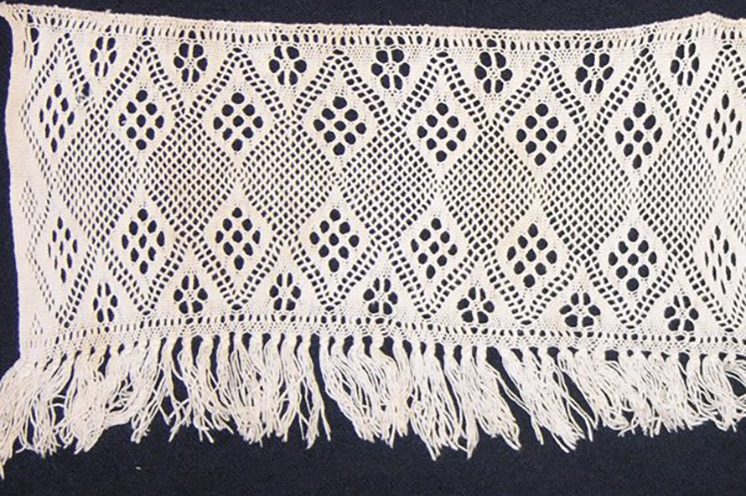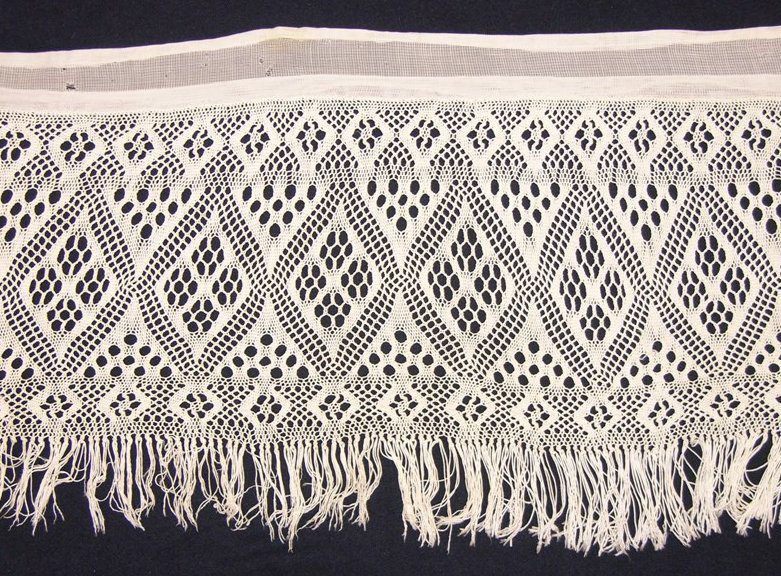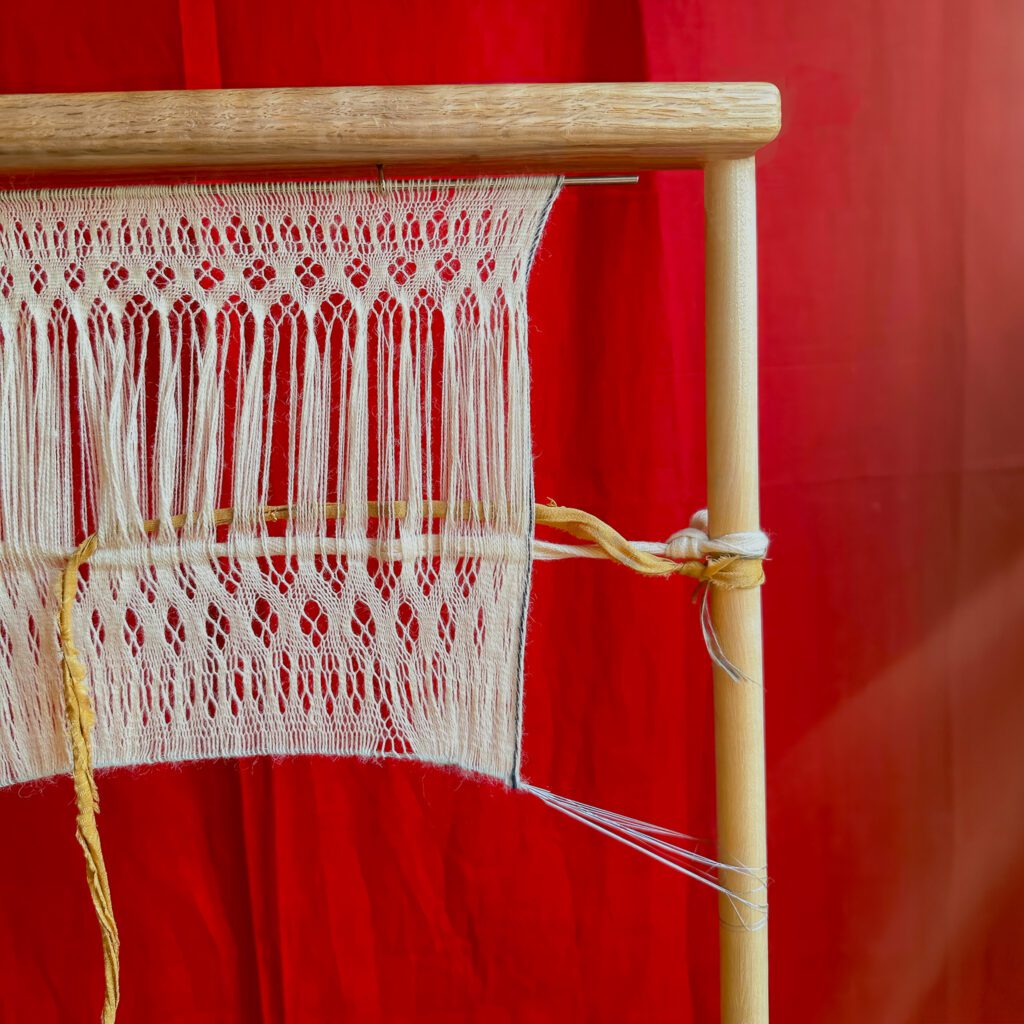What is sprang?
Sprang is a braiding technique used for centuries to make clothing and decorative pieces. It has been found throughout the world and dates as far back as the Bronze age with examples in Egypt from approximately 2000 BCE. The oldest objects found in Norway are from 300-400 CE and mainly made of wool.
This easy-to-do technique makes beautiful and useful pieces of cloth that you can fashion into head scarves, shawls, curtains, tablecloths, towels, and just about anything. To make a piece of sprang, the threads are stretched between two wooden dowels or on a frame, parallel to each other. The fabric is made by winding pieces of thread together, and wooden pieces are used to hold the braiding in place.
Is sprang still practiced today?
Learning this technique is a great way to help carry on this ancient tradition and connect to something really old! The sprang technique is on the red list of endangered traditional handcraft techniques by Norges Husflidslag, the Norwegian handcraft association. That’s not to say that it is not still practiced today.
Janelle Storesund is another fiber artist sharing the tradition. She’s teaching a sprang class in Vesterheim Folk Art School from August 9-11, 2024. Janelle is a textile artist and software engineer based in the New York City area and Hordaland, Norway, who focuses on knitting, sprang, and yarn spinning.
In her introductory sprang class, you will study historical examples from Norway and Denmark, including pieces from the Vesterheim collection. You will learn the basics of sprang techniques and make one or two finished pieces. The class is open to all abilities, and you will go home with at least one project, a frame, and information on how to complete more projects.



Categories
- Folk Art Connections (129)
- Making a Difference (33)
- Vesterheim News (153)
- Vesterheim Stories (56)
